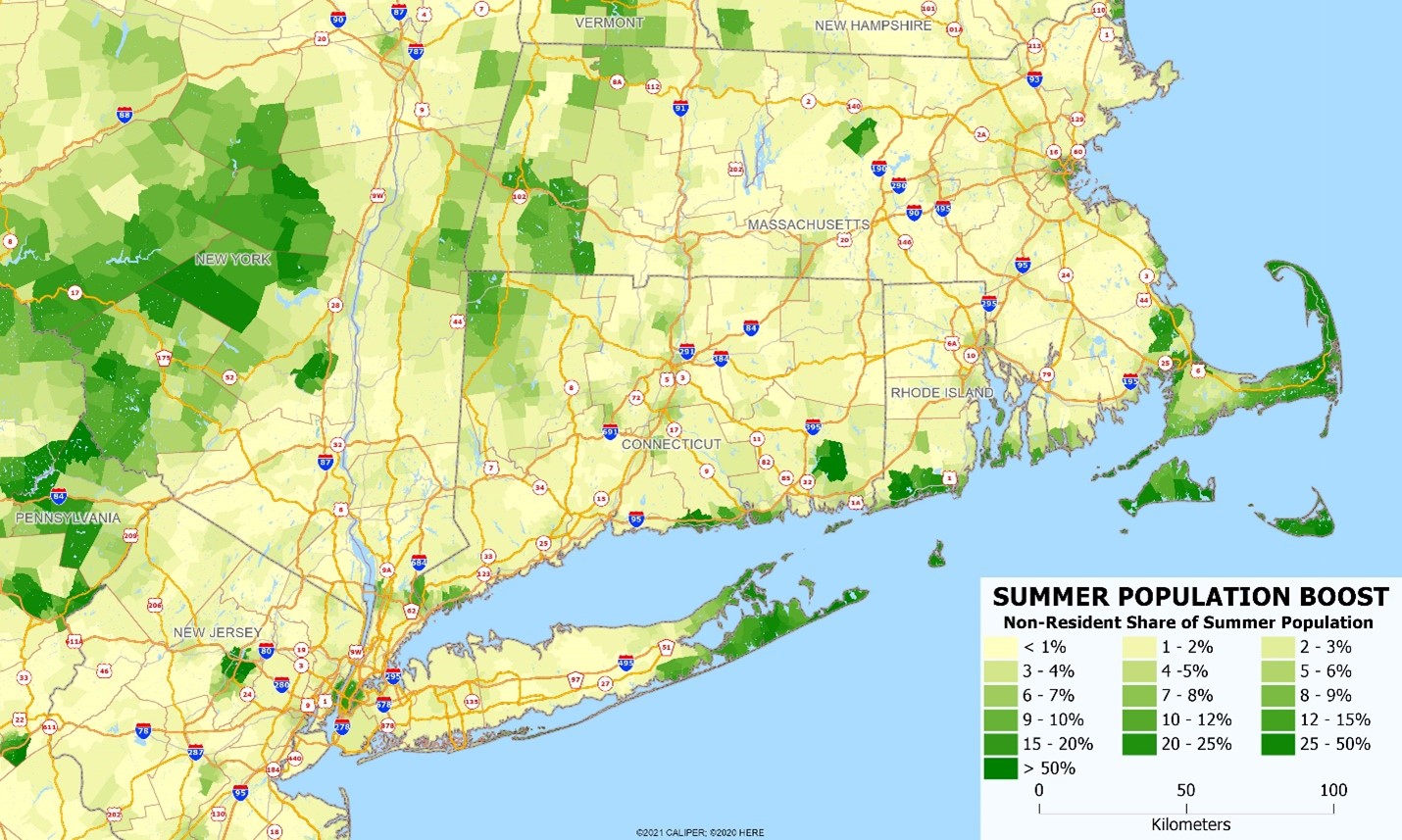Grocery store chains have long been at the forefront of retail location analysis. Much of that analysis revolves around the marrying of sophisticated spatial modeling techniques with both demographic and consumer spending estimates. Often, however, those estimates have been based primarily – even exclusively – on the resident population. With typically low margins, grocery stores tend to be conservative in their location decisions. By considering only the resident population, the result is many of the larger chains typically avoid tourist dependent areas – possibly missing opportunities for small footprint stores. In many beach towns, the residents travel miles to shop at a major grocery store in order to avoid the higher prices typically charged by local, independent food stores.
Cape Cod is a great example of a heavily tourist dependent economy, with a population of just over 215,000 permanent residents. On an average summer night, this population swells by over 37,000 people. Unlike areas with heavy business travel, these are largely leisure tourists looking to hang at the beach and gorge themselves on lobster. Many now stay at vacation rentals, camp on the beach, and park their RV’s wherever they can find a spot. And they eat. They buy groceries, and they eat at restaurants.
The map below shows the summer surge in New England – and the patterns are clear – coastal towns are swamped in the summertime from eastern Long Island to Provincetown. Equally popular are the Catskill and Berkshire ranges. And if you are a restaurant, or a grocery store, your locational analysis ought to account for this additional demand!



Recent Comments